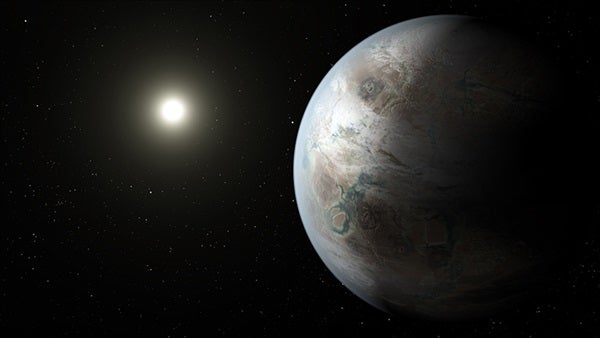A team led by the Carnegie Institution for Science along with MIT has given the public a chance to assist with exoplanet research.
The team has released two decades worth of data, a software package, and an online tutorial to the public to bring a fresh look into the observations of more than 1,600 nearby stars.
“This is an amazing catalog, and we realized there just aren’t enough of us on the team to be doing as much science as could come out of this dataset,” Jennifer Burt, a Torres Postdoctoral Fellow in MIT’s Kavli Institute for Astrophysics and Space Research, said in a press release. “We’re trying to shift toward a more community-oriented idea of how we should do science, so that others can access the data and see something interesting.”
The team has found more than 100 potential exoplanets during a study has appeared in The Astronomical Journal . The released data is from the High Resolution Echelle Spectrometer (HIRES), which is designed to help astronomers measure wavelengths to determine characteristics of the starlight.
“[HIRES] wasn’t specifically optimized to look for exoplanets,” Burt says. “It was designed to look at faint galaxies and quasars. However, even before HIRES was installed, our team worked out a technique for making HIRES an effective exoplanet hunter.”
HIRES helps astronomers by splitting incoming light from the star into the “color” of certain elements (most commonly known as “spectrum”), making it easier to measure the wavelengths with accuracy. HIRES really came in handy, though, by finding when a star’s spectra moves in a regular pattern, indicating a potential exoplanet’s orbit of Earth.
The data collected from HIRES has more than 1,600 “neighborhood” stars within 325 light years from Earth, and the team has highlighted more than 100 stars that may host exoplanets. These observations require more research, though, so nothing has been confirmed yet.
“I think this opens up possibilities for anyone who wants to do this kind of work, whether you’re an academic or someone in the general public who’s excited about exoplanets,” Burt says. “Because really, who doesn’t want to discover a planet?”
The team will continuously update the public dataset with new data while HIRES continues observing nearby stars.










